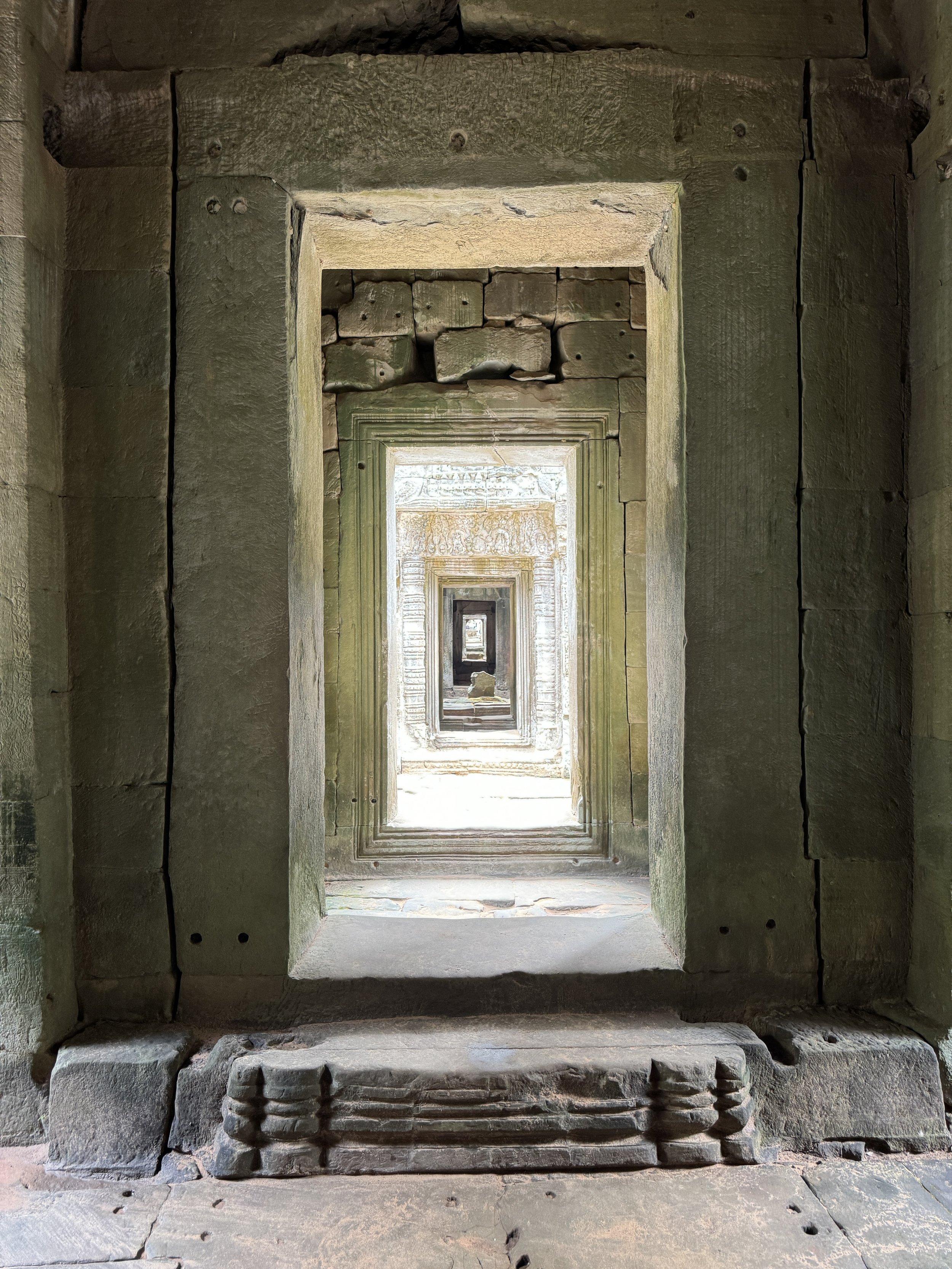July 7
Angkor Temples
The ancient city of Angkor was the capital of the Khmer Empire from the 9th century to the 15th century. The royal families and ruling class lived in palaces within Angkor, and the Kings of the empire went about commissioning large scale building projects to do what all men do according to Natalie Keener (Anna Kendrick), “Pee on things.”
Although there were some projects that had varied civic purposes such as hospitals and military barracks, the majority of these projects were temples. The biggest and most famous is the eponymous Angkor Wat, but the Angkor Wat area has well over 80 structures and complexes that have been discovered so far and more are being found due to advances in archaeological methods such as LIDAR.
Angkor Wat, the largest and eponymous temple in the Angkor Wat area
The scale of Angkor Wat as an individual temple, and the entire Angkor area is massive. The stones that went into building most of the temples weigh up to 100 metric tons. They were cut and ground into shapes that perfectly fit each other so no mortar or was needed, and some of the walls are 100 meters in length.
The walls surrounding the bigger temples are up to 10 meters in height and a kilometer or more on each side. Those large temples are surrounded by hand-dug moats that are up to 10 kilometers in perimeter and 10 meters deep.
View from the second level of Angkor Wat, looking to an entrance gate in the background. People walking on the pathway for scale.
Since Angkor Wat is so huge, it’s easy to take days to explore all the nooks and crannies. I met many people who were exploring on their own, but I went on organized tours. The first two were traditional tours where a van took a small group from temple to temple and a really great local guide gave history, engineering, and culture stories while walking through the 10 main temples. My next one was a one-on-one tour on a bicycle, which allowed us to get to places that the traditional tours couldn’t reach.
Ta Prohm temple, which was used as a location in the movie Tomb Raider, was built as a memorial to the mother of King Jayavarman VII in the late 12th Century
It was awe-inspiring to walk through the temples and understand the human effort that went into building all of these sites. That work was more intense than even the European Cathedrals. The temples are even bigger than Cathedrals, and they were completed in amazingly short time frames. Angkor Wat, the largest, was completed in just 37 years. How do scientists know? Because there are detailed records carved into stones at temples that give administrative details about what resources and how long it took to complete temples.
Coming to Siem Reap and taking many days to go through the temples was everything I thought it would be and more. There’s a calm and quiet in the area surrounding the temples that lends serenity and allows for thoughtful introspection while exploring. In my case, my tour group was small and they were all great people who were all moved by the experience. It was nice to get to know them in the days we were together

















































